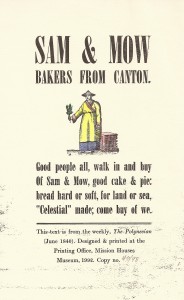- Rust boffins meet in St Petersburg. Good luck to them: sounds like they’ll need it.
- Did 3000-year-old rice really sprout in Vietnam? Nah.
- Indian farmers queue up for old rice seeds. Not old as in the Vietnam case above though.
- And more rice. Did the Chinese really use the sticky kind in mortar 1500 years ago? Yep.
- More ancient technology. This time Mayan rubber.
- “…a major leap forward in species-area relationship fitting…”: where will future habitat loss wreak the most havoc on plant species? And on crop wild relatives?
- The pulses of Africa. Well, a couple of them.
Nibbles: Mayan archaeobeerology, Pesticidal plants, Livestock and livelihoods, Uganda national park
- Cacao beer. What’s not to like?
- CABI blog deconstructs pesticidal plants.
- Worldwatch blog on how “livestock can improve food security and preserve and rebuild communities.”
- Bwindi Impenetrable National Park tries to diversify.
Nibbles: Endangered African breeds, Rice and bananas, AGRA, Adaptation, Old Masters
- ILRI continues its attempt to take over the internet.
- Dorian Fuller summarizes rice in Madagascar in a paragraph. Good trick. And for his next one he rounds up the latest on bananas. The guy’s a machine.
- No adaptation without agrobiodiversity, rapt masses told. And here, like manna from heaven, is an example. Well, sort of.
- Bruegel on agriculture. With picture goodness.
Nibbles: Yams, AnGR, Intensification
- One of the top 10 species described in 2009 is a yam. Yeah, I didn’t believe it either.
- ILRI video on why it’s important to conserve livestock genetic diversity.
- Edible Geography does the sort of deconstruction of Radical Cartography’s agricultural history maps that I was hoping to do but probably wouldn’t have been able to.
How bread-making came to Hawaii
If this 1840 advert intrigues you, or indeed if you think you know what plant the gentleman is holding in his hand, head on over to Rachel Laudan’s blog.
